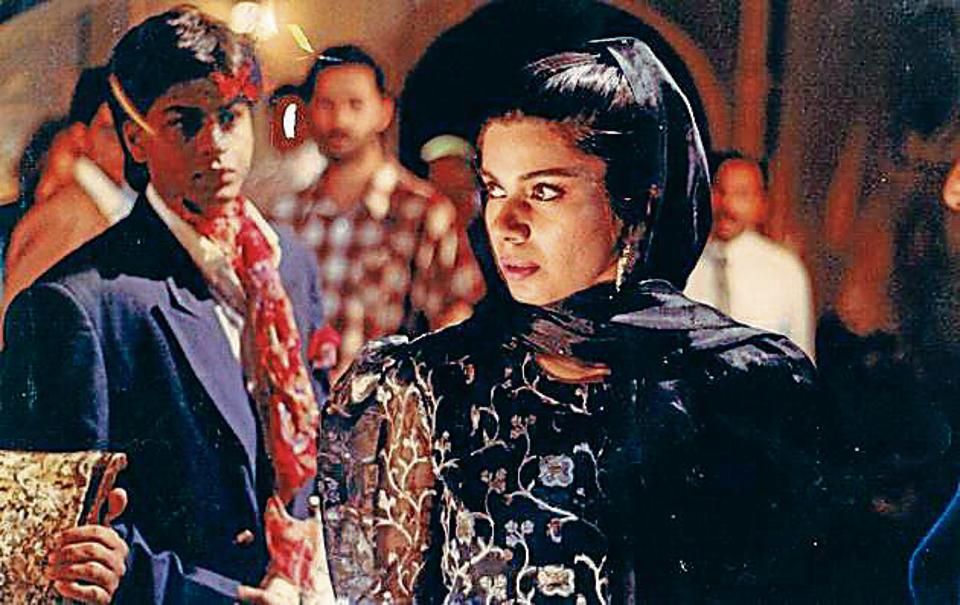Mani and me: Actor Meeta Vasisht is turning the lens on her mentor

In the late ’80s, Mani Kaul and other demons got inside Meeta Vasisht’s head. Vasisht was then a 24-year-old actress studying in India’s premier cinema school, the Film and Television Institute of India. Kaul and Kumar Shahani were India’s leading avant garde filmmakers. Kaul, right from his first film Uski Roti (based on a Mohan Rakesh short story) in 1969, was creating a new cinema, and demanding, as it were, a new audience.
“Mani showed a new relationship was possible between the different arts-literature, painting, music; between image and the cinematic form and between feelings and the spoken speech,” says Vasisht who is now directing a non-fiction film, most likely to be called That Thing called the Actor on the actor’s craft. It opens with a reference to her mentor and Siddheshwari (1989), their first film, about the Hindustani singer from Varanasi. Vasisht was also recently in conversation with scholar Ashish Rajadhyaksha at a retrospective of Kaul’s films at the newly revamped Jawahar Kala Kendra, Jaipur.
Vasisht says Kaul taught her how to be an actor within the camera’s frame. “’Don’t try to be Siddheshwari’, he said. ‘You have to present her spirit, not play her. If I wanted someone like Siddheshwari Devi, I would have cast a plump girl’,” she recalls. “He said I should get some ideas about thumri, kathak. I practised every day for three months. In the film, I may not have danced kathak much, but I needed to move as if my body knew its rhythm.”
The way Vasisht sees it, if the director wants tea, an actress should be able to give him dinner. He may give tips, but an actress’s range must surprise him. The process of film-making “between Mani and me was an engagement between equals,” she says. But she did absorb as much as she could, listening as he talked to the cameraman about framing a shot or the costume designer about colours. These notes, she says, now help as she directs her own films.
If Satyajit Ray was the master realist of Indian cinema, Kaul was the abstractionist. Shyam Benegal, also of the realist school, says Smita Patil “might never have accepted Siddheshwari”. For Patil to play the role, Vasisht believes she would have to forget all about realism – storyline, characterisation, plot. “Mani had waited for 25 years to do the film. He told me he wouldn’t have done it without me,” she says. This was high praise from a man who at the start of the film had told her that the “the problem” was that she was a trained actor.
Vasisht who has also acted in Benegal’s epic serial Bharat Ek Khoj, is one of the few actresses who, between the ’80s and the early ’90s, took career risks as India’s New Wave movement waned. The problem, she admits, was that she wanted “at least 20 films of directors like Kaul and Shahani under her belt ” when producers for such films were hard to find. “I wanted the Bollywood that Alia Bhatt has now.” Who were her contemporaries? Smita Patil and Shabana Azmi had arrived before her; Madhuri Dixit was all over.
In 1989 if she carried Siddheshwari on her shoulders; the same year she played Sridevi’s friend in a blink-and-miss-it role in Yash Chopra’s Chandni. On getting Kaul’s film she was warned this was a director who “turns people into objects”; for Chandni she was congratulated for “bagging” the role.
Ahmaq (1992), her second film with Kaul, had her involved with Shah Rukh Khan playing his first obsessive lover - Rogozhin. This was one of Khan’s early films before breaking into Bollywood. “Mani said this was an actor who responds well to a director’s tone,so he would say ‘Action’ accordingly, softly or with force, depending on how he wanted Shah Rukh to be…In a 100-actor ensemble, Mani made everyone, even an actor without a dialogue, throb with life.”
Vasisht’s other notable films are Govind Nihalini’s Drohkaal (1994), the Aamir Khan-starrer Ghulam (1998) and Rahasya (2015) based on the Aarushi Talwar murder. She has also worked in television and theatre. But with direction, Mani Kaul’s leading lady is finally spreading her wings.
Kumar Shahani, Kaul’s compatriot in cinema, once joked: “You actresses are all promiscuous – you go from one director to the other for roles”. And Vasisth had retorted: “‘Not promiscuous, but spiritually flexible’…We certainly gave the deepest part of ourselves to our directors, and transformed ourselves to their vision.” It was in Shahani’s film, Var Var Vari (1987), that Meeta Vasisth first appeared on screen, says the actress. “And that is how Mani found me.”






